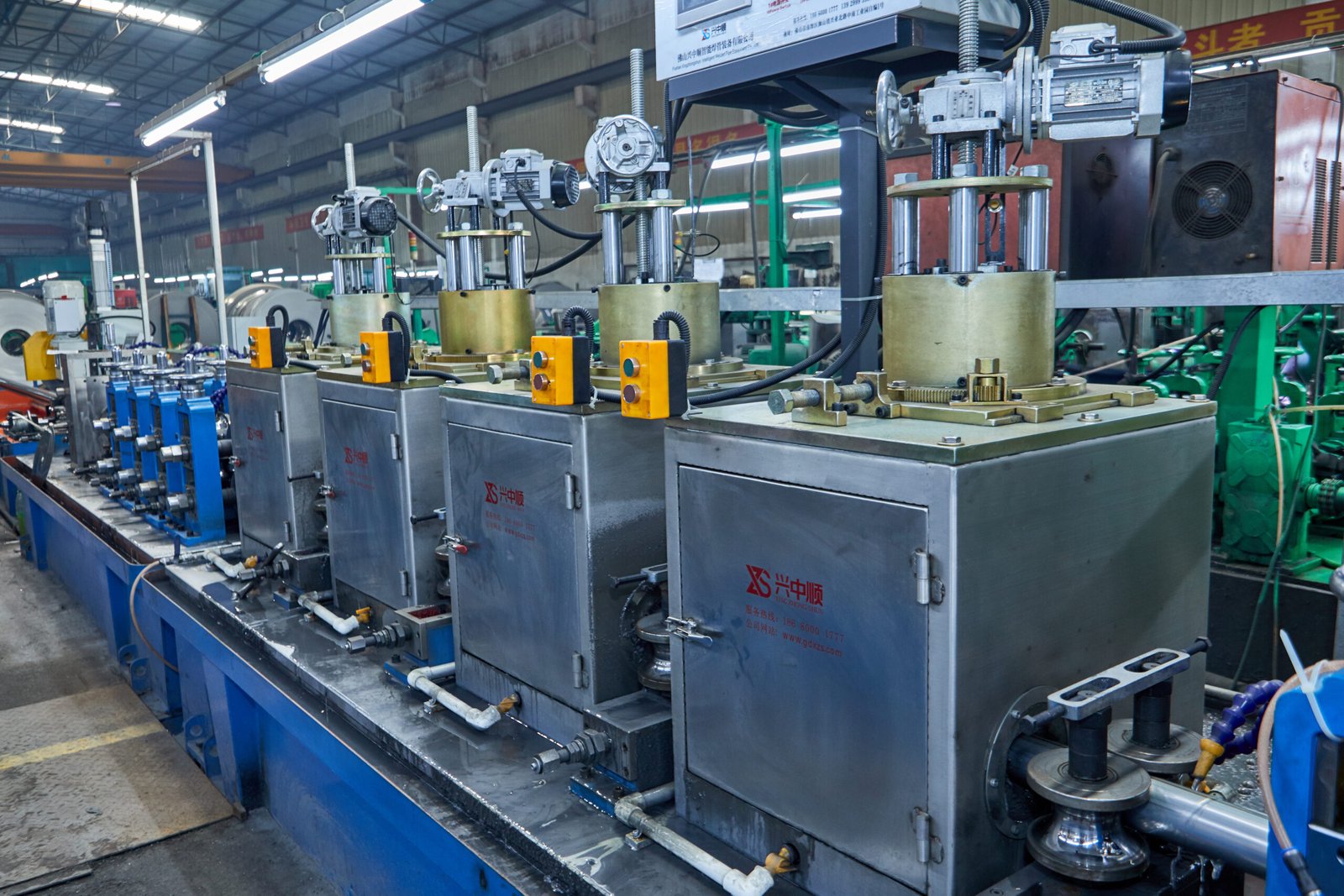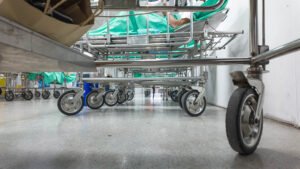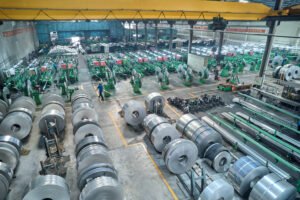Отчет о рынке оборудования для производства труб АСЕАН за 2025 год: Драйверы роста и риски
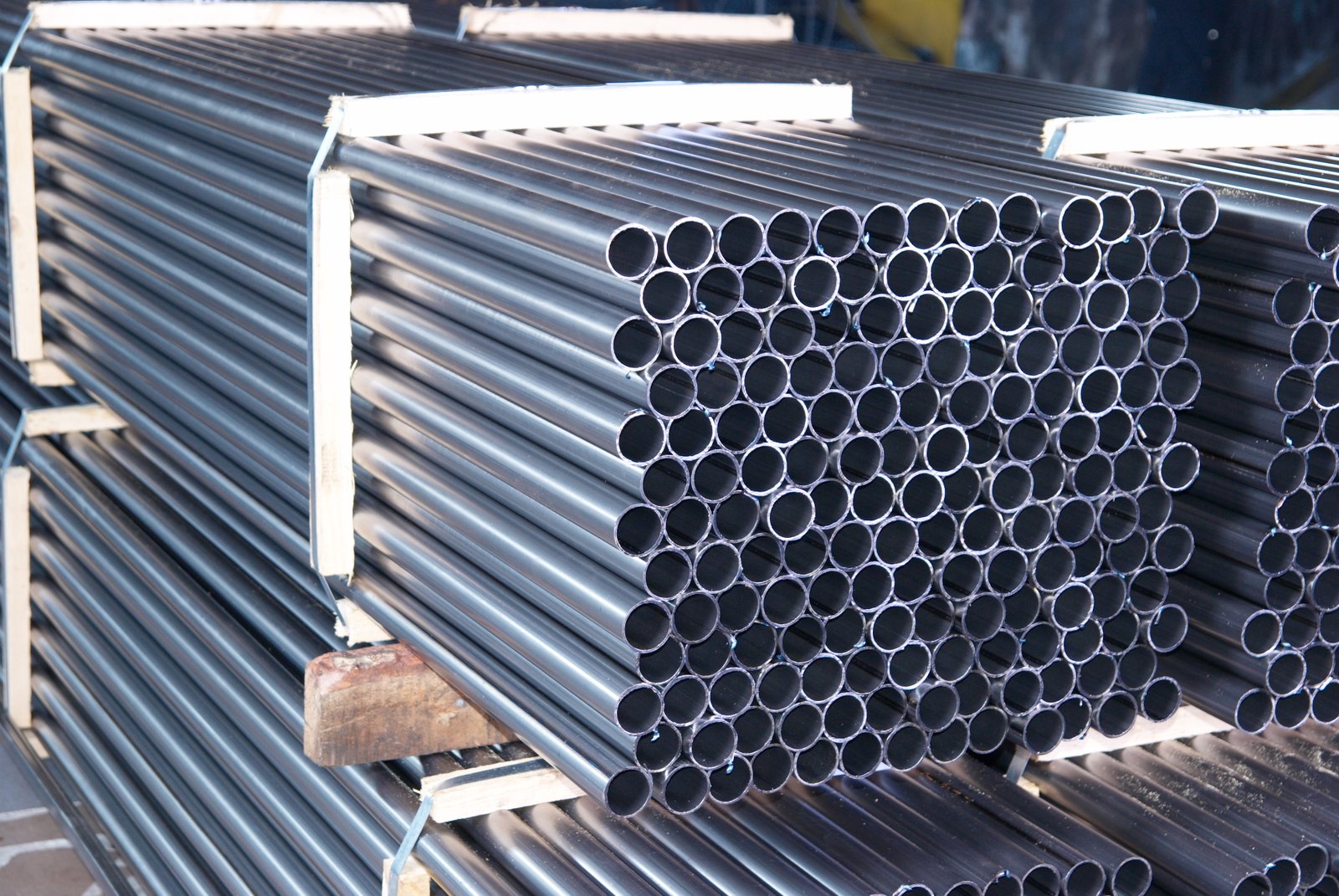
Вы пытаетесь сориентироваться в сложностях рынка АСЕАН и не знаете, где кроются реальные возможности для вашего бизнеса по производству труб? Вы видите потенциал, но опасаетесь рисков - от нарушения цепочки поставок до жесткой конкуренции, - которые мешают вам принимать инвестиционные решения.
Будучи вашим партнером в области точного производства, мы понимаем, что для достижения успеха в регионе АСЕАН необходимо ориентироваться в его уникальном экономическом ландшафте. Ключевым моментом является использование высокопроизводительное автоматизированное оборудование1 которая напрямую противостоит вызовам рынка, превращая потенциальные риски в значительные возможности роста за счет повышения производительности и контроля качества.
За 15 лет работы в этой отрасли я видел, как развиваются рынки, но нынешние темпы изменений в Юго-Восточной Азии беспрецедентны. Этот регион представляет собой динамичную мозаику возможностей и проблем. В то время как бурно развивающиеся инфраструктурные и автомобильные отрасли требуют огромного количества высококачественных труб, навигация по разнообразным нормативным средам и нехватка квалификации требуют стратегического подхода. Это ландшафт, который вознаграждает подготовленных.
В этом отчете мы рассмотрим важнейшие факторы, формирующие рынок оборудования для производства труб в странах АСЕАН. Мы не ограничимся поверхностными наблюдениями, а проведем тонкий анализ, подкрепленный последними данными и практическими наблюдениями с заводских цехов. Я расскажу, как мы в XZS помогли клиентам превратить такие проблемы, как нехватка рабочей силы, в преимущества за счет автоматизации, и как наша прецизионная технология (достигающая допусков ≤ ±0,05 мм) устанавливает новые стандарты качества и эффективности во всем регионе.
Каково текущее состояние рынка оборудования для производства труб в АСЕАН?
Чувствуете себя ошеломленным быстрыми изменениями в производственном ландшафте АСЕАН? Вы пытаетесь определить, куда вложить средства, чтобы получить максимальную прибыль, но сочетание высоких темпов роста и нестабильности рынка создает неопределенность. Это затрудняет уверенное принятие решений о покупке нового оборудования или планов по расширению производства.
Рынок оборудования для производства труб АСЕАН в 2025 году находится в состоянии динамичного роста, характеризующегося значительными инвестициями в инфраструктуру и бурно развивающимся автомобильным сектором. Этот рост обусловлен сильной государственной поддержкой индустриализации и увеличением прямых иностранных инвестиций, что позиционирует регион как важнейший мировой производственный центр.
Нынешний рынок - это история двух реальностей. С одной стороны, вы имеете огромные сигналы спроса. Сайт Азиатский банк развития прогнозирует рост регионального ВВП на уровне 4,9% в 2025 году2Это стимулирует масштабные строительные и промышленные проекты. С другой стороны, такое быстрое развитие приводит к операционному давлению. Производители вынуждены увеличивать объемы производства, повышать качество и эффективность, сталкиваясь при этом с нестабильностью поставок сырья и нехваткой квалифицированной рабочей силы. Например, перед нашим клиентом во Вьетнаме была поставлена задача поставлять трубы из высококачественной нержавеющей стали для новой серии теплообменников. Имеющееся у них оборудование не могло соответствовать жестким допускам и производственным квотам. Они оказались на распутье: рискнуть потерей крупного контракта или инвестировать в значительное технологическое обновление. Подобный сценарий становится все более распространенным в Таиланде, Индонезии и Малайзии. Он подчеркивает критический момент для отрасли: эпоха опоры на дешевую рабочую силу и базовое оборудование заканчивается. Будущее принадлежит тем, кто использует автоматизацию, точность и эффективность. По мере того как мы будем углубляться в эту тему, мы будем изучать конкретные силы, формирующие эту новую конкурентную арену, и то, что это означает для вашего бизнеса.
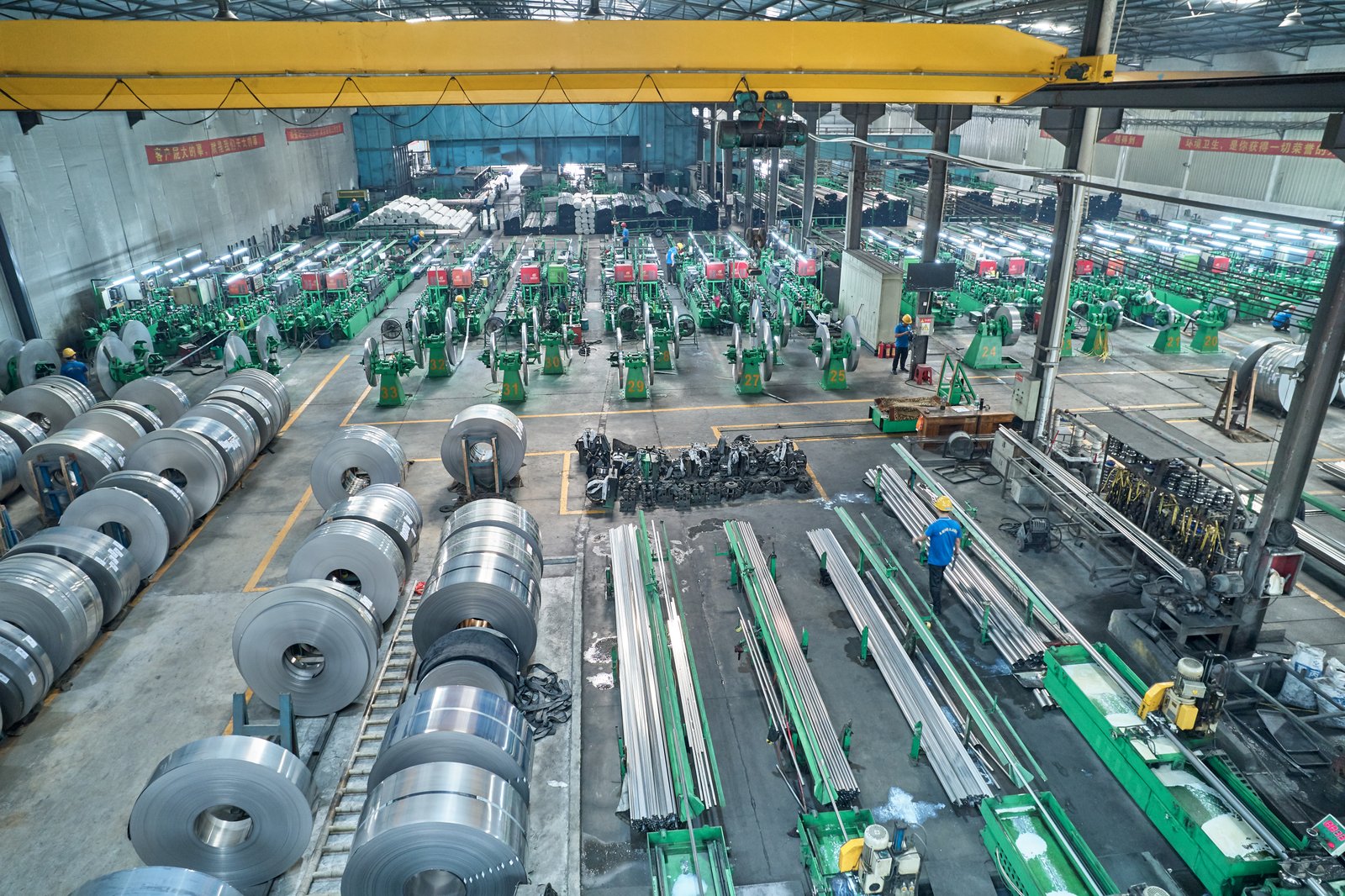
Рынок стран АСЕАН не является монолитом; это совокупность различных экономик, находящихся на разных стадиях промышленной зрелости. Понимание этого разнообразия - первый шаг к пониманию текущего состояния рынка оборудования для производства труб. В таких странах, как Таиланд и Малайзия, развиты автомобильный и электронный секторы, что создает постоянный спрос на высокоточные трубы с высокой добавленной стоимостью. В то же время такие страны, как Вьетнам и Индонезия, переживают взрывной рост строительства и инфраструктуры, что стимулирует спрос на большие объемы конструкционных и промышленных труб. Их объединяет решительный переход к более высоким стандартам и большей сложности. Этот сдвиг приводит к тому, что старое, менее эффективное оборудование устаревает и создает мощный цикл спроса на современные автоматизированные производственные линии. Мы в компании XZS убедились в этом на собственном опыте. Наши запросы из этого региона перешли от запросов на базовые фрезерные станки к подробным спецификациям на полностью автоматизированные линии с возможностью быстрой смены инструмента и интегрированной полировки, что отражает быстрое развитие рынка, требующего более сложных производственных возможностей.
Инфраструктурный бум как основной катализатор спроса
Основой истории роста стран АСЕАН является развитие инфраструктуры. Правительства стран региона вкладывают миллиарды в развитие городов, транспортных сетей и энергетических проектов. Например, Новая столица Индонезии, Нусантара3и инициатива Таиланда по созданию Восточного экономического коридора (ВЭК) - это не просто заголовки, это ощутимый и долгосрочный спрос на стальные и нержавеющие трубы. Эти проекты требуют огромного количества труб для всего - от водо- и газораспределения до структурных каркасов и транспортных систем.
Рассмотрим типичного EPC-подрядчика, с которым мы работаем в Малайзии. Недавно они заключили контракт на строительство крупного водоочистного сооружения. Их задача заключалась не только в поиске труб, но и в обеспечении их соответствия строгим международным стандартам качества и возможности поставки в сжатые сроки. Местные поставщики, использующие устаревшее оборудование, испытывали трудности с целостностью сварных швов и равномерной толщиной стенок. Именно здесь современное оборудование становится решающим фактором. Например, наши сверхмощные трубопрокатные станы разработаны с учетом жестких требований промышленного производства труб, обеспечивая высокопрочные сварные швы и стабильное качество, соответствующее спецификациям проекта, что напрямую отвечает основным потребностям этого бурно развивающегося сектора инфраструктуры.
Спрос распространяется не только на строительство. Еще одним важным фактором является сектор возобновляемых источников энергии. Поскольку такие страны, как Вьетнам, планируют построить 26,65 ГВт плавучих солнечных батарей к 2030 году, а Таиланд - 15,6 ГВт солнечных мощностей к 2035 году, потребность в оцинкованных стальных трубах для монтажных конструкций резко возрастает. Это не просто игра цифр; речь идет о производстве устойчивых к погодным условиям и долговечных труб в массовом масштабе. Для производителей это означает инвестирование в оборудование, способное работать с большими объемами непрерывного производства без ущерба для качества, что является ключевой особенностью наших специализированных производственных линий.
Развитость автомобильного и производственного секторов
Автомобильный рынок стран АСЕАН переживает глубокую трансформацию. Согласно прогнозам, к середине 2030-х годов производство легковых автомобилей достигнет 6 миллионов единиц, а лидирующие позиции займут Таиланд и Индонезия. Более того, рост числа электромобилей (EV), доля рынка которых выросла с 9% в 2023 году до прогнозируемых 13% в 2024 году, создает новые требования. Для электромобилей требуются высокоспецифичные, легкие и прочные трубы для корпусов батарей, систем охлаждения и структурных компонентов. Это требует перехода к прецизионному производству, которое старые машины просто не в состоянии обеспечить.
Клиент из Таиланда, поставщик автомобилей первого уровня, недавно столкнулся с этой проблемой. Чтобы выиграть контракт на поставку новой модели EV, им нужно было изготовить компоненты выхлопной системы из нержавеющей стали с допуском менее ±0,05 мм. Существующее оборудование не могло надежно соответствовать этим требованиям, что приводило к высокому уровню брака и напрасному расходу материала. Переход на одну из наших интеллектуальных прецизионных линий для сварки нержавеющей стали и производства труб позволил не только выполнить требования по допуску, но и увеличить коэффициент использования материала почти на 20%. Это прекрасная иллюстрация того, как технологический прогресс в машиностроении напрямую влияет на конкурентоспособность и прибыльность рынка в условиях развивающегося автомобильного рынка.
Эта тенденция находит отражение во всем производственном секторе. От мебели и сантехники до промышленных теплообменников - требования к качеству и отделке значительно возросли. Потребители и промышленные покупатели больше не приемлют видимые сварные швы или несоответствие размеров. Это вызвало резкий рост спроса на комплексные решения, такие как наши трубопрокатные станы в сочетании с автоматическими полировальными машинами. Обеспечивая бесшовный производственный процесс от сварки до финишной обработки, мы позволяем производителям соответствовать этим более высоким эстетическим и функциональным стандартам, открывая для них новые, более прибыльные сегменты рынка.
Конкурентный ландшафт и внедрение технологий
Конкурентная среда в странах АСЕАН обостряется. Местные производители конкурируют не только друг с другом, но и с импортом из глобальных производственных центров. В этих условиях эффективность производства имеет первостепенное значение. Основной проблемой для многих крупных производителей является использование устаревшего оборудования, которое требует больших трудозатрат, не потребляет много энергии и часто простаивает. Растущие эксплуатационные расходы в сочетании с подтвержденной документально нехваткой квалифицированных машинистов существенно снижают рентабельность и темпы роста.
Именно в этом случае принятие Принципы Индустрии 4.0, такие как полная автоматизация и производство на основе данных4 становится стратегическим императивом. В недавнем исследовании отмечалось, что хотя предприятия стран АСЕАН признают необходимость автоматизации, темпы ее внедрения все еще не достигнуты. Это открывает новые возможности. Компании, решительно взявшиеся за модернизацию своих технологий, смогут опередить конкурентов. Например, наши полностью автоматизированные системы управления с ПЛК и сенсорным экраном снижают зависимость от высококвалифицированных операторов, обеспечивают стабильное качество продукции 24 часа в сутки 7 дней в неделю и предоставляют ценные данные для оптимизации процессов.
Я вспоминаю визит к промышленному производителю труб на Филиппинах. У них было три старых стана с большой бригадой, но они боролись с постоянством выпуска продукции и высокими счетами за электроэнергию. После установки одной высокочастотной сварочно-трубной линии XZS они смогли превысить производительность трех старых линий при меньшей численности персонала. Энергосберегающая технология сварки значительно сократила расходы на электроэнергию, а система быстрой смены оснастки позволила им переходить с одного диаметра трубы на другой за минимальное время. Эта компания не просто купила новый станок, она инвестировала в новую, более конкурентоспособную бизнес-модель, идеально соответствующую современному состоянию рынка АСЕАН.
Каковы ключевые факторы роста этого рынка до 2025 года?
Вы пытаетесь предугадать следующую волну спроса на рынке АСЕАН? Вы знаете, что рост происходит, но определение конкретных секторов, которые будут стимулировать потребность в передовом трубном оборудовании, имеет решающее значение для стратегического планирования и опережения ваших конкурентов.
Ключевыми факторами роста рынка оборудования для производства труб в АСЕАН до 2025 года являются масштабные государственные и частные инвестиции в инфраструктуру, бурно развивающийся автомобильный сектор, переходящий на EV, а также повышение уровня жизни, способствующее росту спроса на высококачественные потребительские и промышленные товары, поддерживаемое проинвестиционной политикой правительства.
Траектория развития рынка АСЕАН - это не просто пологий подъем, ее двигают мощные, пересекающиеся силы. Представьте, что это запуск ракеты с несколькими двигателями. Главный двигатель - это приверженность всего региона к модернизация инфраструктуры5. Речь идет не о мелком ремонте, а об основополагающих проектах - новых городах, высокоскоростных железных дорогах и расширенных энергетических сетях, - для реализации которых требуются миллионы тонн стальных и нержавеющих труб. Второй двигатель - динамичное развитие автомобильной промышленности. По мере роста объемов производства и революции EV спрос на прецизионные трубы для сложных систем резко возрастает. Один из ключевых поставщиков автомобильных выхлопных систем в Малайзии рассказал мне, что их пятилетний план теперь полностью сосредоточен на модернизации линий для работы с более тонкими и прочными сплавами, необходимыми для автомобилей следующего поколения. ли, третий двигатель - растущий располагаемый доход потребителей стран АСЕАН. Это выражается в спросе на более качественное жилье, более сложную мебель и высококачественную бытовую технику - все это зависит от хорошо изготовленных труб. Эти факторы не являются независимыми; они подпитывают друг друга, создавая цикл устойчивого спроса, который представляет собой четкое и убедительное обоснование для инвестиций в передовые производственные технологии.

В перспективе до 2025 года драйверами роста рынка оборудования для производства труб в странах АСЕАН являются не просто тенденции, а фундаментальные экономические сдвиги. Эти сдвиги создают благодатную почву для производителей, оснащенных необходимыми технологиями для удовлетворения спроса в новую эпоху. Сочетание государственного развития, развития промышленности и растущих потребительских ожиданий создает мощную и устойчивую тягу к высокопроизводительным трубопрокатным заводам. Скорость, точность и эффективность - это уже не просто конкурентные преимущества, а необходимое условие для участия. В компании XZS наши исследования и разработки напрямую связаны с этими факторами. Мы разрабатываем такие решения, как усиленные сверхмощные сварочно-трубные машины специально для жестких требований инфраструктурных проектов и наши интеллектуальные прецизионные линии для строгих стандартов автомобильного сектора и сектора элитных потребительских товаров. Такая согласованность крайне важна, поскольку рост идет не только в объемах, но и в стоимости и сложности.
Устойчивое развитие инфраструктуры и строительства
Основной и наиболее заметной движущей силой является неустанное развитие инфраструктуры. Сайт Азиатский банк развития6 продолжает выявлять значительные пробелы в инфраструктуре по всему региону, и правительства реагируют на это амбициозными национальными планами. Например, во Вьетнаме крупные проекты строительства линий метро в Ханое и Хошимине, а также расширение национальных скоростных автомагистралей создают постоянный и высокий спрос на конструкционные и транспортировочные трубы. Аналогичным образом, программа Филиппин "Строить, лучше, больше" продолжает направлять инвестиции в мосты, аэропорты и коммунальные службы. Это не краткосрочные проекты, а десятилетние начинания.
Эти постоянные инвестиции создают предсказуемый долгосрочный спрос для производителей труб. Один из наших клиентов, дистрибьютор промышленного оборудования в Индонезии, отмечает рост числа запросов на промышленные сварочные аппараты для труб большого диаметра на 40% за год. Их клиенты, являющиеся подрядчиками государственных предприятий, больше не могут укладываться в сроки реализации проектов, используя старое и медленное оборудование. Им нужны машины, способные надежно и эффективно производить более крупные и толстостенные трубы. Наши трубопрокатные станы большого диаметра разработаны именно для этих целей, обеспечивая надежную работу, необходимую для превращения сырой стали в основополагающие компоненты национальной инфраструктуры. Рост производства здесь напрямую связан с физическим развитием стран, что делает его одним из самых стабильных и предсказуемых факторов.
Кроме того, тенденция урбанизации, сопровождающая этот инфраструктурный бум, создает вторичный спрос. Новые жилые башни, коммерческие комплексы и промышленные парки - все они нуждаются в обширной сантехнике, системах ОВКВ и конструкционных трубах. Это стимулирует спрос на широкий диапазон размеров и материалов труб, от нержавеющей стали для сантехнических применений до углеродистой стали для структурных каркасов. Для производителя это означает наличие гибких производственных возможностей. Наши станки с быстросменной оснасткой являются прямым ответом на эту потребность, позволяя производителям быстро переключаться между различными производственными циклами для удовлетворения разнообразных строительных потребностей без дорогостоящих простоев.
Эволюция автомобилестроения и регионализация цепочек поставок
Автомобильный сектор АСЕАН не просто растет, он трансформируется. Регион находится на пути к к середине 2030-х годов производить около 6 миллионов легковых автомобилей в год7В настоящее время компания является одним из крупнейших мировых центров производства. Ключевой тенденцией, стимулирующей спрос на оборудование, является переход на более дорогие и сложные автомобили, особенно EV. По данным PwC, доля рынка электромобилей в странах АСЕАН-6 быстро растет благодаря государственным стимулам и осведомленности потребителей. Это меняет ситуацию для производителей труб. Для компонентов EV, таких как системы охлаждения аккумуляторов, высокопрочные каркасы безопасности и легкие детали шасси, требуются трубы с высочайшей точностью, металлургией и целостностью сварных швов.
Этот сдвиг оказывает огромное давление на цепочку поставок. Недавно один из производителей автомобильных компонентов в Таиланде рассказал мне, что они рискуют быть исключенными из следующей платформы крупного OEM-производителя, поскольку их нынешнее оборудование не может производить трубы с требуемым соотношением прочности и веса. Им требовалось решение, которое обеспечивало бы не только прецизионные допуски (≤ ±0,05 мм), но и передовую технологию сварки для работы с новыми сплавами. Именно эту задачу и призваны решить наши интеллектуальные прецизионные линии для производства нержавеющей стали. Инвестируя в эту технологию, они обеспечивают будущее своего бизнеса и позиционируют себя как ключевых игроков в региональной цепочке поставок электромобилей.
Другой важнейшей движущей силой является регионализация цепочек поставок. Мировые автомобильные бренды активно диверсифицируют свои цепочки поставок, чтобы снизить геополитические риски, и АСЕАН является главным бенефициаром. Эта стратегия "Китай+1" означает, что все большее количество производств компонентов локализуется в регионе. Чтобы воспользоваться этой возможностью, производители из стран АСЕАН должны соответствовать мировым стандартам качества. Это невозможно без оборудования мирового класса. Поэтому стремление стать поставщиком первого или второго уровня для мировых автомобильных гигантов само по себе является мощным катализатором для инвестиций в новые высокопроизводительные трубопрокатные станы.
Восхождение потребительского и промышленного рынка, заботящегося о качестве продукции
Помимо привлекающих внимание инфраструктурного и автомобильного секторов, более тихой, но не менее мощной движущей силой является неуклонный рост доходов и потребительских ожиданий в регионах. По мере того как рост среднего класса в таких странах, как Филиппины, Вьетнам и Индонезия8В то же время растет спрос на товары лучшего качества. Это видно на рынках мебели, сантехники и бытовых приборов. Потребители теперь ищут чистые линии, долговечность и ощущение премиум-класса, которые привносят хорошо сделанные трубы из нержавеющей стали, отказываясь от более низкокачественных альтернатив.
Недавно я разговаривал с владельцем крупной компании по производству мебели во Вьетнаме. В течение многих лет они использовали простые трубы из углеродистой стали местного производства. Однако, чтобы конкурировать на экспортном рынке и привлечь более требовательных внутренних клиентов, им необходимо было перейти на высококачественную полированную нержавеющую сталь. Их проблема заключалась в том, чтобы добиться безупречной отделки последовательно и с минимальными затратами. Решением стала интегрированная производственная линия, начинающаяся с одного из наших прецизионных трубопрокатных станов и подающаяся непосредственно на автоматический полировальный станок для круглых труб. Это решение "под ключ" позволило им контролировать весь процесс, от сварки до финишной обработки, обеспечивая превосходный продукт при одновременном снижении затрат.
Спрос на качество распространяется и на промышленный сектор. В пищевой промышленности, фармацевтике и химическом производстве растет потребность в гигиеничных и коррозионностойких трубопроводах из нержавеющей стали, обусловленная нормативными и рыночными требованиями. В этих областях требуется идеальная целостность сварных швов для предотвращения загрязнения и обеспечения безопасности. Наши машины, разработанные в соответствии со стандартами ISO 9001 и оснащенные передовыми системами управления сваркой, идеально подходят для таких ответственных условий. Широкий спрос на более высокое качество как потребительских, так и промышленных товаров обеспечивает стабильную и долгосрочную основу для роста рынка современного оборудования для производства труб.
Какие риски и вызовы стоят перед рынком оборудования для производства труб в АСЕАН?
Вас беспокоят возможные подводные камни, связанные с выходом или расширением на рынок АСЕАН? Обещание высоких темпов роста заманчиво, но ориентироваться на такие риски, как нехватка квалифицированной рабочей силы, нестабильность цепочки поставок и острая конкуренция9 это залог стабильного успеха и защиты ваших инвестиций.
Основные риски, с которыми сталкивается рынок оборудования для производства труб в странах АСЕАН, включают в себя значительную нехватку квалифицированной рабочей силы для управления современным оборудованием, нестабильные цены на сырье и перебои в цепочке поставок, острую ценовую конкуренцию со стороны недорогих производителей, а также использование различных и непоследовательных стандартов регулирования в странах-участницах.
Хотя драйверы роста в АСЕАН очевидны, путь к успеху сопряжен с серьезными операционными проблемами. Было бы ошибкой смотреть на регион через призму оптимизма, не признавая наличие препятствий. Самая насущная проблема, о которой я слышу от своих клиентов, - это нехватка талантов. Они инвестируют в современное оборудование, но затем с трудом находят операторов, обладающих техническими навыками для максимального использования его потенциала. Это создает досадное "узкое место", когда возможности технологии ограничиваются человеческим фактором. Еще одна серьезная головная боль - непредсказуемость цен на сталь и другое сырье, что может снизить маржу прибыли по контрактам с фиксированной ценой. Только в прошлом году заказчик в Индонезии был вынужден остановить производство на две недели, потому что партия Рулон нержавеющей стали задерживался, и местные цены неожиданно выросли10. Кроме того, они сталкиваются с постоянным давлением со стороны более мелких, дешевых конкурентов, которые могут снижать качество, чтобы предложить более низкую цену, что затрудняет конкуренцию по стоимости. Это не мелкие неудобства, это фундаментальные бизнес-риски, для снижения которых требуются надежные стратегии. Задача состоит не в том, чтобы полностью избежать этих рисков, а в том, чтобы создать устойчивую операционную систему, способную противостоять им и адаптироваться к ним.
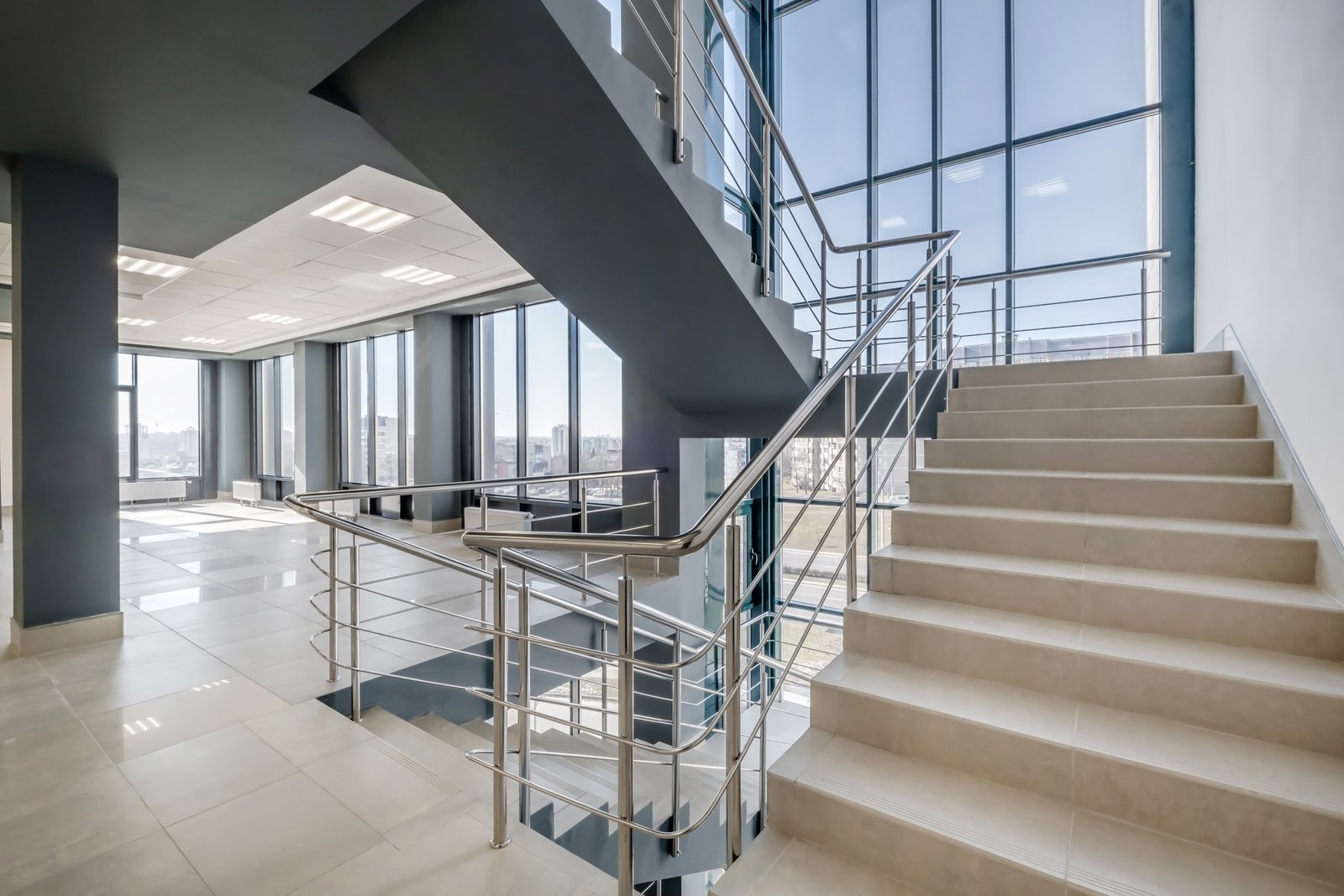
Работа на рынке АСЕАН требует четкой оценки рисков. Несмотря на широкие возможности, они сопряжены с проблемами, которые могут свести на нет даже самые многообещающие начинания. Со своей позиции в компании XZS, оборудовавшей заводы по всему региону, я не понаслышке знаю, как эти проблемы проявляются на производстве. Самые успешные игроки - это не те, кто избегает рисков, а те, кто их предвидит и закладывает устойчивость в свою операционную ДНК. Такая устойчивость часто обеспечивается стратегическим выбором технологий. Например, инвестиции в автоматизацию - это не просто повышение эффективности; это прямая мера борьбы с нехваткой квалифицированной рабочей силы.11. Аналогичным образом, выбор оборудования, обеспечивающего максимальное использование материалов, является мощным средством защиты от нестабильных цен на сырье. Признание и планирование этих рисков - это разница между процветанием на рынке АСЕАН и простым выживанием.
Нехватка квалифицированной рабочей силы и технических знаний
Одной из самых острых проблем в странах АСЕАН является нехватка квалифицированной рабочей силы. По мере развития производственных технологий потребность в специалистах, способных эксплуатировать, обслуживать и устранять неисправности сложного оборудования, например автоматизированных трубопрокатных станов, опережает развитие местного кадрового резерва. В отчете Manufacturing Asia говорится о "перетягивании каната", когда компании постоянно переманивают друг у друга опытных работников, что приводит к нестабильности и росту затрат на рабочую силу. Я стал свидетелем этого во время посещения нового предприятия одного из клиентов в Таиланде. Они приобрели одну из наших высококлассных интеллектуальных производственных линий, но она работала лишь на 70% от своей потенциальной мощности. Причина? У них был только один старший техник, способный управлять системой управления ПЛК и следить за сложной сменой оснастки.
Такой дефицит кадров имеет несколько негативных последствий. Он ограничивает внедрение более производительных технологий, поскольку компании опасаются, что не смогут эффективно их использовать. Он увеличивает операционные расходы за счет повышения заработной платы немногочисленных квалифицированных работников и потерь от неэффективной работы оборудования. И самое главное, это может отрицательно сказаться на качестве, поскольку неправильно настроенное или обслуживаемое оборудование не будет производить трубы в соответствии с требуемыми характеристиками. Это основная причина, по которой мы, компания XZS, сосредоточились на разработке удобных интерфейсов, таких как ПЛК + сенсорные экраны, и предлагаем комплексное обучение и послепродажную поддержку как часть наших решений "под ключ". Мы считаем своей обязанностью помочь устранить этот пробел для наших клиентов.
Долгосрочное решение требует совместных усилий промышленности и учебных заведений по разработке соответствующих программ профессиональной подготовки. Однако в краткосрочной и среднесрочной перспективе наиболее эффективной стратегией снижения рисков для производителя является инвестирование в оборудование, разработанное с учетом простоты использования и автоматизации. Оборудование, автоматизирующее сложные процессы, снижает когнитивную нагрузку на оператора и обеспечивает базовый уровень качества и производительности, защищая бизнес от негативных последствий нехватки рабочей силы.
Волатильность цепочки поставок и нестабильность затрат
Глобальная цепочка поставок остается нестабильной, и производители стран АСЕАН в значительной степени подвержены ее колебаниям. Основным риском здесь являются цены и доступность сырья, в частности рулонной стали. Цены на сталь, как на сырьевой товар, зависят от глобальных рыночных сил, торговой политики и стоимости доставки, причем все эти факторы могут меняться без предупреждения. Внезапный скачок цен на нержавеющую сталь может полностью перечеркнуть прибыль по проекту, который был заявлен несколькими месяцами ранее. Например, в последнее время Тарифная политика США оказала влияние на мировые цены на сталь и торговые потоки12Это создает неопределенность для всех.
Такая нестабильность является серьезной стратегической проблемой. Один из производителей труб большого диаметра во Вьетнаме рассказал мне, как они проиграли крупный тендер на проект строительства трубопровода, потому что им пришлось закладывать в цену значительный буфер на возможный рост цен на сталь, что сделало их предложение неконкурентоспособным. Это классическая дилемма: слишком низкая цена - риск убытков, слишком высокая цена - риск потери бизнеса. Одним из наиболее эффективных способов снижения этого риска на операционном уровне является максимальное использование материала. Каждый кусочек бракованного материала - это упущенная выгода. Именно поэтому мы разработали наши производственные линии, позволяющие достичь коэффициента использования материала до 98%, что на 20% выше, чем у более старых, менее точных машин. Такая эффективность обеспечивает важнейшую финансовую подушку безопасности, помогая смягчить некоторые удары, связанные с волатильностью цен.
Помимо цены, существует риск перебоев в поставках. Перегруженность портов, геополитические события или производственные проблемы поставщиков могут задержать поставки сырья, что приведет к остановке производства. Один из подходов - создание более устойчивых цепочек поставок путем диверсификации поставщиков и хранения стратегических запасов. Другой подход заключается в использовании гибкого оборудования. Наши системы быстросменной оснастки позволяют производителю быстро переключиться на выпуск другой продукции с использованием имеющихся у него материалов, обеспечивая работу завода и получение прибыли даже при задержке основного сырья.
Интенсивная конкуренция и разнообразие нормативно-правовой базы
Рынок стран АСЕАН отличается высокой конкуренцией. Местные производители сталкиваются с давлением не только друг друга, но и крупных производителей из Китая и Индии, которые часто могут использовать эффект масштаба, чтобы предложить более низкие цены. Это создает постоянное понижательное давление на цены, что затрудняет поддержание здоровой маржи, особенно для тех, кто конкурирует исключительно по себестоимости. В этом случае возникает риск оказаться втянутым в гонку на дно, где качество приносится в жертву цене, что в конечном итоге наносит ущерб репутации бренда и его долгосрочной жизнеспособности. Один мой знакомый филиппинский производитель мебели жаловался, что конкуренты часто обходят его, используя более тонкостенные трубки низкого качества, которые изначально выглядят одинаково, но со временем выходят из строя.
Единственный надежный способ противостоять этому - конкурировать не только по цене, но и по стоимости. Это означает, что превосходное качество, точность и долговечность оправдывают высокую цену. Именно здесь выбор оборудования имеет первостепенное значение. Станок, способный выдерживать жесткий допуск ≤ ±0,05 мм, производит количественно более качественный продукт. Производственная линия, включающая автоматизированную полировку, создает заметно более качественную отделку. Это ощутимые ценностные предложения, которые можно предложить клиентам, переведя разговор со стоимости метра на общую стоимость владения и качество продукции.
Конкурентное давление усугубляется разнообразием нормативно-правовой базы в десяти странах АСЕАН. Единого набора стандартов безопасности продукции не существует, соблюдение экологических норм, или процедуры импорта/экспорта13. Для того чтобы разобраться в этом сложном переплетении нормативных актов, требуются значительные административные ресурсы и местный опыт. Например, требования к сертификации безопасности промышленного оборудования в Малайзии отличаются от требований во Вьетнаме. Будучи производителем, сертифицированным по стандарту ISO 9001, мы разрабатываем наше оборудование в соответствии со строгими международными стандартами, что в целом обеспечивает прочную основу для выполнения или превышения большинства местных требований. Мы также используем нашу обширную дистрибьюторскую сеть и опыт работы в регионе, чтобы помочь нашим клиентам в решении специфических проблем, связанных с соблюдением требований в их странах.
| Вызов | Непосредственное воздействие | Стратегическое смягчение последствий (решение XZS) |
|---|---|---|
| Нехватка квалифицированной рабочей силы | Снижение производительности, увеличение эксплуатационных расходов, несоответствие качества. | Инвестируйте в автоматизированные системы (ПЛК + сенсорное управление), удобные интерфейсы и комплексное обучение. |
| Волатильность цепочки поставок | Непредсказуемые материальные затраты, остановки производства, снижение рентабельности. | Максимальная эффективность благодаря высокому коэффициенту использования материала (до 98%) и гибкому оборудованию (быстросменная оснастка). |
| Интенсивная конкуренция | Давление на цены, снижение маржи, риск снижения качества. | Конкурируйте по цене благодаря высочайшей точности (допуск ≤ ±0,05 мм) и интегрированной финишной обработке (станки для полировки труб). |
| Нормативное разнообразие | Увеличение затрат на соблюдение требований, барьеры для выхода на рынок, административные задержки. | Придерживайтесь международных стандартов (ISO 9001) и привлекайте опытных партнеров с местным опытом. |
Как игроки отрасли могут снизить эти риски и использовать возможности для роста?
Вы ищете четкую стратегию превращения рыночных рисков в конкурентные преимущества? Вы видите не только проблемы, но и огромный потенциал. Главное - найти действенные шаги и технологические решения, которые повысят устойчивость и позволят вашей компании захватить грядущую волну роста.
Участники отрасли могут снизить риски, инвестируя в автоматизацию и высокопроизводительное оборудование, чтобы противостоять нехватке рабочей силы и стоимости материалов. Для использования возможностей роста необходимо сосредоточиться на таких дорогостоящих секторах, как автомобилестроение и инфраструктура, и использовать прецизионные технологии для удовлетворения спроса рынка на высокое качество и более жесткие допуски.
Путь вперед в динамичном Рынок АСЕАН14 это не поиск секретного коридора без риска. Речь идет о создании надежного, гибкого и технологически продвинутого предприятия, способного процветать в условиях трудностей. Суть этой стратегии заключается в фундаментальном изменении мышления: от взгляда на оборудование как на капитальные расходы к взгляду на него как на стратегическую инвестицию в устойчивость и конкурентное преимущество. Я разговаривал именно об этом с десятками владельцев заводов по всему региону. Те, кто добился успеха, перестали спрашивать: "Какую самую дешевую машину я могу купить?" и начали спрашивать: "Какая машина лучше всего решит мои самые большие проблемы - труд, отходы и качество?" Например, клиент из Бразилии, сталкивающийся с теми же проблемами, что и наши клиенты из стран АСЕАН, боролся с высокой текучестью кадров и непостоянным объемом производства. Внедрив одну из наших полностью автоматизированных линий, они сократили зависимость от оператора, стабилизировали производство и в течение шести месяцев добились увеличения общего объема выпуска продукции на 15%. Именно такое преобразующее воздействие может оказать стратегическое внедрение технологий. Речь идет о том, чтобы превратить ваши самые большие операционные головные боли в источники силы, позволяющие вам уверенно использовать значительные возможности роста, которые предлагает АСЕАН.
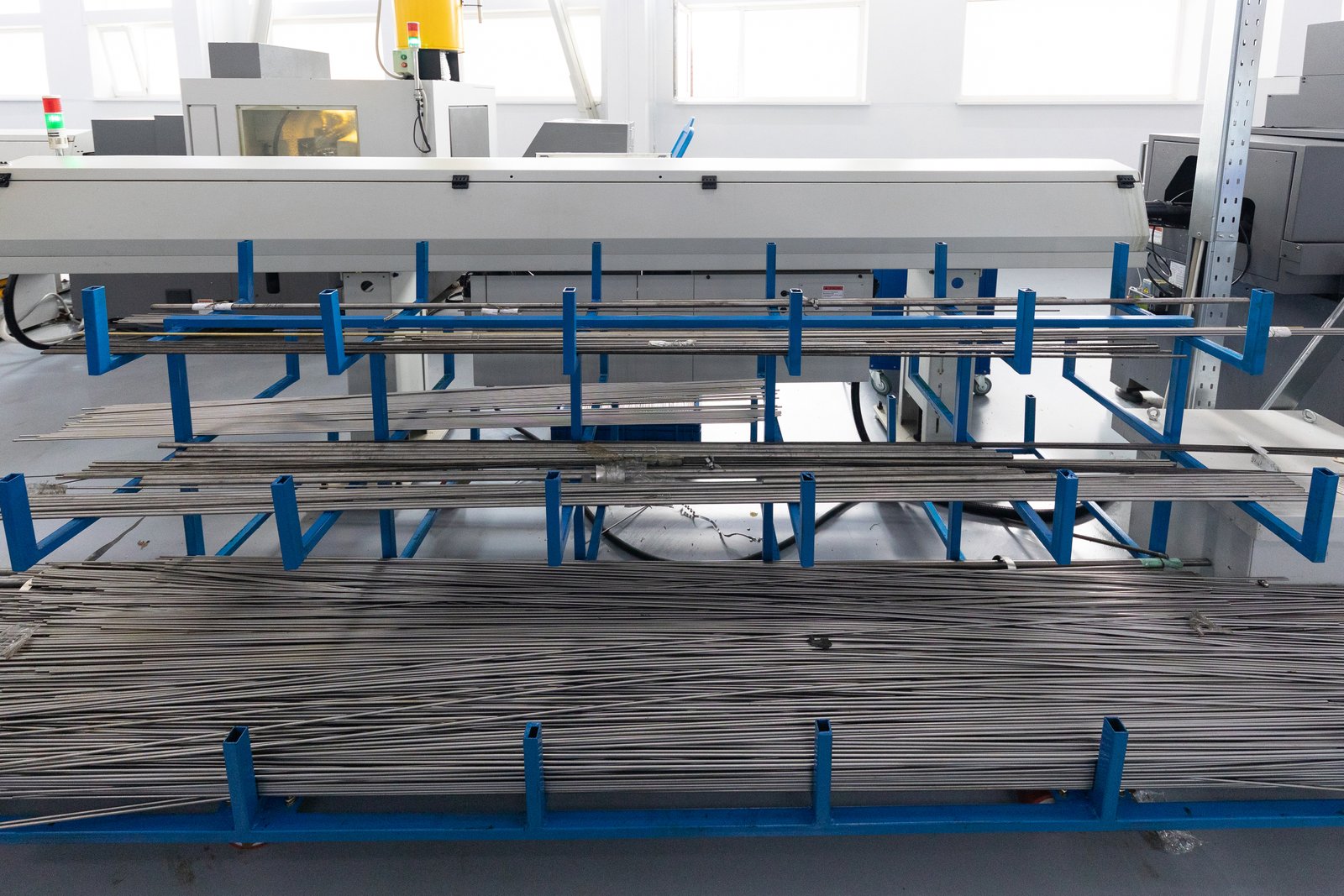
Снижение рисков и стимулирование роста в секторе производства труб в странах АСЕАН - две стороны одной медали. Именно те действия, которые повышают устойчивость к рыночным проблемам, открывают доступ к самым прибыльным возможностям. Основной принцип заключается в том, чтобы вывести свои производственные возможности за пределы базового уровня. На рынке, переполненном дешевыми конкурентами, единственный устойчивый путь к прибыльности - это продвижение вверх по цепочке создания стоимости. Это предполагает многогранную стратегию, сочетающую целевые инвестиции в технологии, ориентацию на конкретные быстрорастущие ниши и развитие прочных партнерских отношений с клиентами. Являясь партнером наших клиентов благодаря OEM/ODM и решениям "под ключ", мы в XZS не просто продаем машины; мы помогаем разрабатывать стратегии, обеспечивая идеальное соответствие технологий бизнес-целям и рыночным реалиям, с которыми сталкиваются наши клиенты, будь то в Юго-Восточной Азии, Южной Америке или на Ближнем Востоке.
Стратегические инвестиции в автоматизацию и эффективность
Самым мощным инструментом для снижения рисков является стратегические инвестиции в автоматизацию15. Это напрямую связано с двумя проблемами - нехваткой квалифицированной рабочей силы и необходимостью повышения эффективности для борьбы с давлением на стоимость. Автоматизация с помощью таких систем, как наш ПЛК + сенсорный экран, стандартизирует производственный процесс. Она устраняет непостоянство, возникающее в результате работы операторов с разным уровнем квалификации, гарантируя, что каждая произведенная трубка будет соответствовать одним и тем же высоким стандартам в режиме 24/7. Такая последовательность сама по себе является огромным конкурентным преимуществом.
Рассмотрим пример крупного производителя декоративных трубок в Таиланде, с которым мы работали. Их основной проблемой была нехватка квалифицированной рабочей силы, что приводило к высокому уровню брака и несовместимой отделке полированных трубок. Это вредило их бренду и ограничивало их возможности по заключению контрактов с экспортерами элитной мебели. Инвестировав в готовое решение от XZS - интеллектуальный прецизионный трубопрокатный стан, интегрированный с автоматическим полировальным станком, - они преобразили свою работу. Автоматизированная система потребовала меньшего количества специализированных операторов. Точность стана (допуски ≤ ±0,05 мм) обеспечила последовательную подачу материала на полировальный станок, а автоматический полировальный станок каждый раз обеспечивал безупречную отделку. Это не только решило проблему трудозатрат, но и повысило качество продукции, что позволило компании успешно выйти на экспортный рынок премиум-класса.
Кроме того, эффективность - это прямое средство защиты от волатильности затрат. Наш сайт энергосберегающая технология высокочастотной сварки16 снижает одну из самых больших переменных затрат при производстве труб - электроэнергию. В сочетании с оборудованием, обеспечивающим коэффициент использования материала до 98%, экономия на эксплуатации становится значительной. Эта экономия может компенсировать колебания цен на сырье, позволяя производителю предлагать конкурентоспособные цены без ущерба для маржи. Речь идет не просто о сокращении расходов, а о создании более прочной финансовой основы для бизнеса.
Фокусировка на высокодоходных нишах и приложениях
Вместо того чтобы пытаться конкурировать со всеми по каждому типу трубок, стратегический подход заключается в том, чтобы сосредоточиться на ниши с высокой стоимостью, где точность и качество не подлежат обсуждению17. В истории роста АСЕАН есть несколько таких отраслей: автомобильный сектор (особенно электромобили), медицинское оборудование, строительство высокого класса и переработка пищевых продуктов. Эти отрасли менее чувствительны к цене и более ориентированы на качество. Попытка поставить прецизионные компоненты для автомобильного теплообменника с помощью низкокачественного и неточного стана - это залог неудачи.
Мы помогали клиенту из США, производителю автомобильных выхлопных систем, пройти именно через этот переход. Они проигрывали конкурентам, которые могли обрабатывать более современные, легкие сплавы. Их старое оборудование просто не справлялось с материалами и жесткими допусками. Они решили вложить средства в одну из наших усиленных сварочных машин для сварки труб, изготовленную по индивидуальному заказу. Этот прочный станок с ЧПУ обеспечил стабильность и точность, необходимые для работы со сложными материалами. В результате они не только вернули потерянные контракты, но и расширили свой бизнес, позиционируя себя как специалистов по высокопроизводительным выхлопным системам.
Эта же стратегия применима непосредственно к странам АСЕАН. Производитель труб в Малайзии может стать основным поставщиком трубок для охлаждения аккумуляторных батарей EV. Компания в Индонезии может специализироваться на производстве высококачественных труб из нержавеющей стали, необходимых для растущей фармацевтической и пищевой промышленности страны. Такая специализация позволяет им наращивать глубокий опыт, добиваться более высоких цен и создавать мощный конкурентный ров. Наша роль заключается в предоставлении специализированного оборудования - будь то прецизионный промышленный трубопрокатный стан или линия по производству труб большого диаметра - которое позволяет реализовать эту целенаправленную стратегию с высокой добавленной стоимостью.
Повышение устойчивости благодаря качеству и обслуживанию
На рынке, где доверие может быть низким, а качество продукции сильно различается, создание репутации надежность и качество, сертифицированное по стандарту ISO 900118 это мощный способ снизить риски и привлечь лояльных клиентов. Это выходит за рамки самого продукта и охватывает весь опыт клиента, от первичной консультации до послепродажного обслуживания. Это основная часть нашей бизнес-модели в XZS. Будучи производителем, сертифицированным по стандарту ISO 9001, наша приверженность качеству заложена в каждом нашем станке - от прочных рам с ЧПУ до прецизионной оснастки.
Такая приверженность качеству напрямую снижает риск инвестиций для наших клиентов. Они знают, что покупают машину, рассчитанную на длительный срок службы и производительность. Это стало ключевым фактором для оптовой компании по продаже строительных материалов и EPC-подрядчика в Бразилии, которые выбрали наше оборудование. Они поставляли трубы для важнейших объектов инфраструктуры и не могли позволить себе риск сбоев или задержек в производстве, вызванных некачественным оборудованием. Наша репутация прочной конструкции и надежной работы обеспечила им необходимую уверенность.
Кроме того, комплексная поддержка создает прочные отношения с клиентами. Наши решения "под ключ" включают в себя не только станок, но и установку, обучение и постоянную техническую поддержку через нашу глобальную дистрибьюторскую сеть. Это особенно важно в таком регионе, как АСЕАН, где существует проблема квалифицированной рабочей силы. Гарантируя нашим клиентам максимальную отдачу от их инвестиций, мы становимся не просто поставщиком, мы становимся партнером в их успехе. Такая модель партнерства формирует невероятную лояльность. Когда бразильскому клиенту потребовалось расширить свои мощности, он не стал объявлять публичный тендер, а обратился непосредственно к нам. Это высшая форма снижения рисков: создание лояльной клиентской базы, которая ценит качество и партнерство, а не низкую цену.
Какие технические достижения рекомендуются для будущего успеха на рынке АСЕАН?
Вы задаетесь вопросом, какие технологии определят следующее поколение производства труб? Чтобы обеспечить себе конкурентное преимущество на быстро развивающемся рынке АСЕАН, очень важно инвестировать в технические достижения, которые обеспечат ощутимые улучшения в точности, эффективности и гибкости на долгие годы вперед.
Для будущего успеха на рынке АСЕАН рекомендуемые технические достижения включают полностью автоматизированные производственные линии с ПЛК, высокоточную оснастку с жесткими допусками (≤ ±0,05 мм), энергоэффективную высокочастотную сварку, а также оборудование с возможностью быстрой замены для повышения гибкости и сокращения времени простоя, воплощая принципы Индустрии 4.0.
Будущее производства труб в АСЕАН будет определяться не просто увеличением объемов производства, а улучшением, ускорением и повышением интеллектуального уровня. Технические достижения, которые имеют значение, - это те, которые непосредственно направлены на решение основных проблем рынка, таких как качество, стоимость и гибкость19. Задумайтесь не только о базовой механике мельницы, но и обо всей производственной экосистеме. Разговор переходит к интеллектуальному производству, где сходятся данные, автоматизация и точность. Несколько лет назад клиент мог удовлетвориться станком, который просто производил круглую трубу. Сегодня тот же клиент, как и крупный поставщик мебели в Индии, требует полностью автоматизированную линию, которая может переключаться между круглыми и квадратными профилями, интегрирована с системой инвентаризации и предоставляет данные об эффективности производства в режиме реального времени. Это не футуристический список желаний, а новый стандарт. Инвестиции в эти достижения больше не являются обязательными для тех, кто стремится к лидерству. Это необходимый набор инструментов для создания жизнеспособного, прибыльного и перспективного производства в самом динамичном экономическом регионе мира.
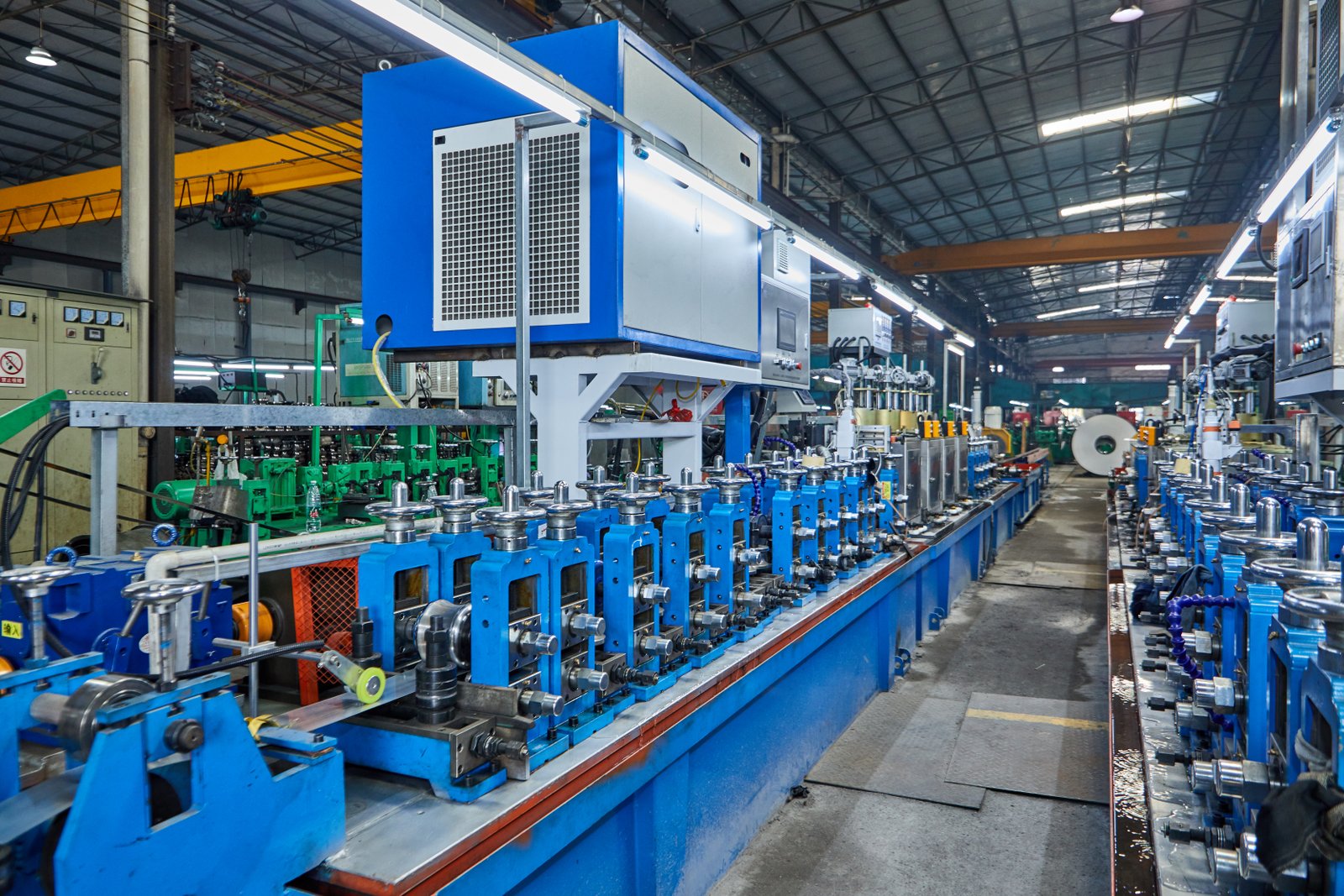
Чтобы обеспечить долгосрочный успех на рынке АСЕАН, производители должны выйти за рамки постепенных улучшений и принять основополагающие технологические сдвиги. Машины завтрашнего дня - это не просто эволюция прошлого, это скачок к принципам Индустрии 4.0. Это означает, что необходимо сосредоточиться на автоматизации, интеграции данных и гиперэффективности. С моей точки зрения, в компании XZS, где мы управляем "умным" заводом площадью 20 000 м² и используем передовые лаборатории моделирования, цель ясна: создать линии по производству труб, которые будут не просто инструментами, а интеллектуальными системами, предназначенными для производства. Эти системы призваны минимизировать человеческий фактор, максимально повысить эффективность использования материалов и энергии, а также обеспечить гибкость, необходимую для адаптации к быстро меняющимся требованиям рынка. Для любого производителя из стран АСЕАН, стремящегося к процветанию в 2025 году и далее, внедрение этих технических достижений - самый прямой путь к устойчивому конкурентному преимуществу.
Полная автоматизация и интеллектуальное управление (Индустрия 4.0)
Важнейшим техническим достижением является переход к полностью автоматизированным производственным линиям, управляемым интеллектуальными системами управления. Эра ручных настроек и качества, зависящего от оператора, закончилась. Будущее - это полностью автоматизированная линия, управляемая центральным ПЛК и удобным сенсорным интерфейсом. Такой уровень автоматизации дает революционные преимущества. Во-первых, он решает проблему квалифицированной рабочей силы, встраивая экспертные знания в само оборудование. Сложные процессы, такие как регулировка мощности сварки, длины резки и синхронизация скорости, выполняются автоматически, обеспечивая оптимальную производительность независимо от уровня квалификации оператора.
В качестве примера можно привести наши интеллектуальные прецизионные линии по производству сварных труб из нержавеющей стали. Они объединяют все этапы производства, от разгрузки до резки и штабелирования, в единый бесшовный автоматизированный рабочий процесс. У одного из клиентов, производителя автомобильных теплообменников в США, после внедрения нашей автоматизированной системы количество брака снизилось более чем на 80%. Управление с помощью ПЛК обеспечивает идеальное соблюдение всех параметров на протяжении всего производственного цикла, устраняя несоответствия, которые были характерны для ручных операций. Такой уровень контроля позволяет им уверенно соответствовать строгим требованиям к качеству, предъявляемым их клиентами-автопроизводителями.
Кроме того, эти интеллектуальные системы являются генераторами данных. Они обеспечивают обратную связь в режиме реального времени о темпах производства, расходе материалов и потенциальных проблемах с техническим обслуживанием. Эти данные позволяют менеджерам перейти от реактивного решения проблем к проактивной оптимизации. Они могут выявлять узкие места, отслеживать эффективность с течением времени и планировать профилактическое обслуживание до того, как произойдет поломка. Такой подход, основанный на данных, является сутью Индустрии 4.0 и важнейшим шагом для любого производителя из стран АСЕАН, желающего конкурировать на мировом уровне.
Непреложный стандарт высокой точности
По мере становления рынков растет спрос на точность. В контексте АСЕАН это обусловлено развитием автомобильной промышленности, электроники и высокотехнологичного строительства. "Достаточно близко" уже не подходит. Новым эталоном является количественно измеримая точность, а золотым стандартом - допуск на размеры ≤ ±0,05 мм. Достижение такого уровня точности невозможно на более старом, менее жестком оборудовании. Для этого требуется станок, построенный на прочной раме с ЧПУ, которая минимизирует вибрацию и обеспечивает идеальное выравнивание оснастки.
Такая точность оказывает прямое и глубокое влияние на конечный результат. Во-первых, она резко снижает количество брака. Когда каждая труба соответствует спецификации, использование материала возрастает, что напрямую повышает рентабельность. Наши линии, спроектированные с учетом высокой точности, регулярно помогают клиентам увеличить выпуск продукции из того же количества сырья на целых 20%. Во-вторых, это позволяет производить продукцию с более высокой стоимостью. Компоненты для медицинского оборудования, аэрокосмической промышленности или передовой электроники имеют значительную ценовую надбавку, но все они требуют практически идеальной точности размеров.
Приведенная ниже таблица иллюстрирует разительную разницу между традиционным и современным высокоточным оборудованием, подчеркивая, почему этот технический прогресс так важен для будущего успеха.
| Характеристика | Традиционная трубная мельница | Интеллектуальная прецизионная линия XZS | Влияние на производителей стран АСЕАН |
|---|---|---|---|
| Толерантность | > ±0,1 мм | ≤ ±0,05 мм | Возможность выхода на дорогостоящие рынки (автомобильный, медицинский). |
| Система управления | Ручной / полуавтоматический | Полностью автоматизированный ПЛК + сенсорный экран | Снижение трудозависимости и стабильное качество. |
| Использование материалов | ~80-85% | До 98% | Значительная экономия средств и повышение рентабельности. |
| Энергетическая система | Стандартная частотная сварка | Энергосберегающие высокочастотные | Снижение эксплуатационных расходов и уменьшение воздействия на окружающую среду. |
| Переключение размеров | Медленный (часы), ручной | Быстросменная оснастка (минуты) | Повышение гибкости и времени безотказной работы производства. |
| Рама и долговечность | Стандартная изготовленная рама | Прочная рама, обработанная на станках с ЧПУ | Долгосрочная надежность и стабильная точность. |
Эта таблица подтверждает тезис: инвестиции в точность - это не расходы, это инвестиции в возможности, качество и прибыльность.
Передовые системы сварки и гибкой оснастки
Сердцем любого трубопрокатного стана является сварочная система. Здесь рекомендуется использовать энергосберегающая высокочастотная сварка в полупроводниковом режиме20. Эта технология обеспечивает более высокую эффективность и более стабильный, контролируемый сварной шов по сравнению со старыми системами вакуумных трубок. В результате получается более прочный и стабильный сварной шов, что очень важно для применения под высоким давлением в системах ОВКВ и нефтегазовых трубопроводах, а также для эстетических применений, где шов должен быть незаметен после полировки. Экономия энергии, часто превышающая 20-30% по сравнению со старыми системами, обеспечивает прямую постоянную финансовую выгоду.
Гибкость - последний кусочек технологической головоломки. Рынок стран АСЕАН разнообразен, и способность производителя быстро адаптироваться к различным потребностям клиентов является основным конкурентным преимуществом. Именно поэтому быстросменная оснастка и гибкие системы определения размеров становятся незаменимыми. Традиционные станы могут занимать несколько часов, а для перехода с одного диаметра трубы на другой требуется квалифицированная команда. Наши современные линии оснащены быстросменными кассетами, которые можно заменить за считанные минуты.
Я убедился в этом на собственном опыте на заводе дистрибьютора промышленного оборудования в Индии, обслуживающего широкий круг клиентов. Их старый станок был узким местом из-за длительного времени переналадки, что делало нерентабельными небольшие партии заказов. После перехода на линию XZS с системой быстрой переналадки они смогли с прибылью принимать заказы любого размера. Утром они могли производить трубы большого диаметра для строительного проекта, а во второй половине дня переходить на производство более мелких прецизионных труб для клиента-автомобилиста. Такая гибкость коренным образом изменила их бизнес-модель, позволив им гораздо быстрее реагировать на рынок и значительно увеличив время работы оборудования, приносящего доход.
Заключение
Чтобы процветать на рынке АСЕАН в 2025 году, вы должны стратегически инвестировать в автоматизированное, высокоточное оборудование для производства труб. Такой подход напрямую снижает риски, связанные с трудовыми ресурсами и затратами, и одновременно обеспечивает рост в секторах с высокой добавленной стоимостью, гарантируя вашу долгосрочную конкурентоспособность и прибыльность в этом динамичном и требовательном регионе.
-
Узнайте о преимуществах автоматизации для повышения качества, производительности и снижения рисков при производстве труб ↩
-
См. официальные прогнозы экономического роста и промышленного влияния АСЕАН ↩
-
Узнайте о крупных инфраструктурных проектах, определяющих потребности стран АСЕАН в стальных трубах ↩
-
Изучите практические примеры Индустрии 4.0 и уровень ее внедрения в машиностроительных отраслях стран АСЕАН ↩
-
Узнайте, как модернизация инфраструктуры напрямую повышает спрос на передовые трубные станы и технологии ↩
-
Изучите данные АБР и списки проектов для поиска возможностей роста производства труб, связанных с инфраструктурой ↩
-
Доступ к прогнозам и данным о тенденциях в автомобильном секторе, определяющих потребности в трубном оборудовании ↩
-
Понимание социально-экономических тенденций, определяющих потребление высококачественной продукции на основе труб ↩
-
Получите обзор критических рисков (трудовые ресурсы, цепочка поставок, конкуренция) для производства в АСЕАН ↩
-
Ознакомьтесь с реальными примерами перебоев в поставках стали и их финансовыми последствиями ↩
-
Узнайте, как автоматизация решает проблемы с трудовыми ресурсами в промышленном производстве ↩
-
Понять факторы международной торговли, влияющие на цены на сталь в регионе АСЕАН ↩
-
Получите практические рекомендации и контрольные списки для экспортеров оборудования, ориентированных на страны АСЕАН ↩
-
Узнайте о перспективах рынка и возможностях в производственном секторе АСЕАН ↩
-
Получите практические примеры того, как автоматизация повышает отказоустойчивость и эффективность производства ↩
-
Ознакомьтесь с техническими характеристиками и примерами применения энергосберегающей технологии сварки в действии ↩
-
Понять, какие производственные ниши обеспечивают более высокую рентабельность и постоянный спрос ↩
-
Узнайте, как сертификат ISO 9001 сигнализирует покупателям о качестве и надежности ↩
-
Узнайте о конкурентном давлении и основных требованиях к производителям труб в регионе АСЕАН. ↩
-
Поймите преимущества эффективности и качества современных систем высокочастотной сварки. ↩
